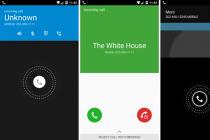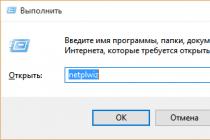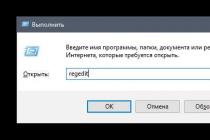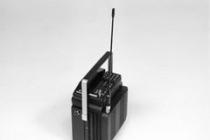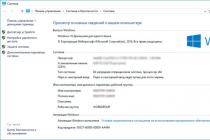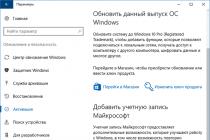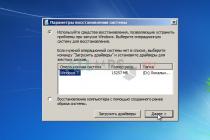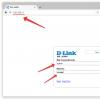In Windows 10, as in previous versions of this OS, you can use special modes to shutdown and quickly restore the session. For example, hibernation mode, which allows you to save everything you did in this session and put the computer on a lower power consumption. At the same time, even if it is not possible to recharge the laptop or connect the PC to the network, the hibernation mode will save everything on the hard disk until it is turned on. But after turning on, you are asked each time to enter your account password, which is very annoying if only you use the computer. We propose to consider ways on how to remove the password at login in Windows 10.
How to remove the login password in Windows 10. Method 1
The simplest method that will suit all users, including newbies who have recently switched to the top ten.
This completes the actions of method number 1. Now we know how to disable login password in Windows 10. Let's move on to the second shutdown method.
How to remove the login password in Windows 10. Method 2
This option for canceling password login is a little more difficult for inexperienced users, but not as difficult as it might seem. Let's use the keyboard and enter the Win + R combination. In the "Run" utility window, enter "Netplwiz": 

In fact, there are a lot of ways to disable Windows 10 login password. You can even use the option through the registry, but so that you do not accidentally mess things up in this segment of the system, we did not consider it. The above methods are the most optimal and everyone can choose the one that suits him best.
Wouldn't life be so much easier without passwords? Not so safe, but much easier. Avoid memorizing a lot of numbers for everything we do on the Internet, or waiting for reset confirmation emails and typing complex phrases into programs. However, life is not that easy, and passwords are used wherever possible.
Windows 10 users also cannot get away from this problem, since a password is required to work with the operating system. You will not be able to completely remove it. Even for the local account to work properly, you still need a lock. However, there are easy ways to simplify login and reduce the productivity impact of a password.
By default, every time you boot Windows 10, you will be prompted to enter your password, cancel the screen saver, or change user. All of this is customizable. While it won't be possible to completely remove the password, we can still stop the login prompt after every Windows startup, or cancel the screensaver.

On a note! There is a way to completely avoid passwords by using a guest account. To get started, let's find out how to cope with the need to enter a password at login and on the lock screen.
Removing password at login
If you want your device running Windows 10 to boot without interruption, and the system does not bother you with a password, then rest assured that everything will work out. If you are the only user or allow other people to access your computer, do the following:

Now, every time you boot, Windows will stop asking you for a password and will directly open the desktop. Keep in mind that if you entered the wrong password at startup, this will not work. If a second request is found, follow these steps again. To do this, check the box, add a password, restart your computer, uncheck the box and confirm the action. Everything should work now.
Removing the password from the lock screen
Many are probably more worried about having to enter a password after leaving Windows 10 unattended for a while. As a result, the lock screen appears. It protects unauthorized access to the workflow and personal files of the user during the absence. In a business or school environment, this feature is necessary, but at home it is annoying. Here's how to turn it off:
- Go to the "Accounts" section. It can be easily found in the "Parameters" (gear in the start menu).


- Click on the third tab from the bottom located on the left.

- Go down and find the "Login Required" option. Select the option as in the following screenshot.

- Scroll to the bottom of the screen and click on the "Lock Screen Options" text link.

- On the right side of the window, look at the bottom of the text link "Screen Saver Options".

- Make sure the box next to "Start at login screen" is unchecked.

You should now be able to boot Windows 10 and cancel the screensaver without asking for a password.
Now that passwords have been removed (mostly), find out more about the environment and who might be using your computer. As mentioned, it's okay to be the only user. Otherwise, take reasonable precautions.
Using a local account to remove the password in Windows 10
The manufacturer doesn't want you to know about this, but there are two types of accounts in the system. The first is the Microsoft account you need to sign in to, and the second is the local account. The latter has the same privileges, but does not report your activities.
To completely remove the need to enter a password in Windows 10, try setting up a local user account. To do this, do the following:

Using a local account in Windows 10
There are several considerations to be aware of when using a local account. First, select this profile type only after activating Windows. Second, this decision will affect OneDrive, Office 365, Windows Store, and other apps that depend on your ID. The system will also delete any preference settings on the computer.
Important! One final privacy note, if you are currently logged into Windows 10 using local data and accessed the system storage, then it will convert it to a Microsoft account. This automatically turns on tracking and all those annoying things that make the Windows 10 experience worse.
Video - How to remove a password for Windows 10
Every day more and more PC users are switching to Windows 10. Either they have begun to get used to it, or it has become fashionable. For some, the tenth Windows is simply teeming with flaws. But, do not forget about some of its obvious and important advantages. The latter include fast download speeds. Turning on Windows would be even faster if it were not for entering the password.
Of course, a password is a necessary thing when you need to keep information from prying eyes. But, if only you are sitting at the computer, then by and large you do not need it. Moreover, some are annoyed by the constant input of a secret combination. Today I will teach you how you can remove the password when logging into Windows 10.
Don't forget about the danger
Before you learn how to remove the password when logging into Windows 10, consider whether it is worth doing at all. After all, all files will become publicly available for any user who sits down at your computer.
The password should not be removed if:
- It stores important information and other family members use the computer, especially children or novice users.
- You need to take your computer to a service for repair.
- You have decided to stop using antivirus software (some types of Trojans realize their full potential only under passwordless accounts with administrative rights).
If you nevertheless decide to remove the password when logging into Windows 10, then we will tell you about three easy ways to do it.
Disable password through "User Accounts"
In order to start the snap-in, you need to call the utility "run". The key combination Win + r will help us with this. After the "Run" window appears, you need to enter the command "netplwiz" in the data entry field and click "OK".

After that, the "User Accounts" window will open. Click on your account and uncheck the box "Require username and password". To save the setting, press "ok".
In the newly appeared window, we again confirm our intentions to refuse to enter the password when entering the system.

We restart the system in order to make sure that the procedure is carried out correctly. The next time the OS starts up, it will not ask for a password to enter the system.
Resetting the password.
This method does not remove the password entry form from the authorization window, but after it is completed, the login to the local admin account will be available after pressing the "Enter" key.
Let's move on to zeroing:
Open the "start" menu and launch the "Settings" application.

Now you need to go to the "accounts" section.

Open the "Login parameters" subsection and next to the "Password" item click on the "Change" button.

Now, to confirm your actions, enter the current password from the OS in the password field.

In the window that opens next, leave the first and second fields blank. In the latter, enter a hint for a new, "blank" password.

After saving the settings, we reboot the system to check the results of the work done.
Disable the password through the registry.
This method of disabling the password through the registry is a little more complicated than the previous ones, but all the same, it should not cause difficulties. The main thing is to do everything as I tell you.
This method should only be used if the Account Management snap-in does not respond for any reason.
Once again, we remind you that you only need to follow the plan that I will describe to you. After all, all changes in the registry are responsible for loading Windows. "By turning the wrong way", you will immediately disrupt the loading of the OS and Windows will have to be interrupted.
To start this procedure, you need to open the "run" window, that is, the registry editor. In the "open" input field, write the following input "regedit" and click "ok".

You will see a window split in two. On the left side, you must go to the following path "HKEY_LOCAL_MACHINE \ SOFTWARE \ Microsoft \ Windows NT \ CurrentVersion \ Winlogon".
Find "AutoAdminLogon" in the list of options on the right half. Click on it with the right mouse button and select "Change" from the menu.

Put one (instead of zero) in the "Value" field of the parameter change window and save the setting.

You can check if the above procedure was successful after restarting your computer. If, when loading the OS, you no longer see the window for entering the password, but you already see the desktop, then you are well done and you did everything correctly.
If you are an inexperienced PC user and are afraid to go into the registry on your own, you can use one of the ready-made solutions: a console command or a reg file. Both solutions do the same thing: change the AutoAdminLogon value from 0 to 1.
Is it possible to turn off password protection on a Microsoft account?
Since a Microsoft account is also needed for purchases of various features in the Windows store, you must use a password to synchronize data between devices and to access account management through the corporation's website. you can also activate Windows through the account. Therefore, it is impossible to remove it.
If you find it difficult to enter a password when logging into the OS under Microsoft account, the corporation suggests replacing it with a PIN (numeric device identifier) or picture password. It will be more comfortable for you.
To log into Windows 10, the user has to enter the password for their local or online Microsoft account each time. This provides a certain level of protection of computer data from third-party access, but is inconvenient for home users, because increases the access time to the desktop. In this tutorial, we will look at how to remove the user password prompt on the Windows 10 login screen (Windows Server 2016/2012 R2) and configure automatic login under a specific account.
A warning... Automatic logon is used for the convenience of the user, but reduces the level of protection of data on the computer. Autologon should be enabled only if you are the only user of the computer and are sure that no one else can access it. Otherwise, the security of your personal data is at risk.
Disabling password entry does not mean that your account should not have a password. It's just that when you boot Windows 10, the password for logging into the computer will be substituted by the system itself. In all other cases, for example, when accessing from another computer over the network or when connecting to a remote desktop (rdp), the password will have to be specified manually.
Disable password entry in account settings
The easiest way is to disable the password prompt in the system user account settings.

Note... On computers that are members of an Active Directory domain, you cannot disable the "Require username and password" option because of. In this case, the easiest way is to disable the password prompt using the registry (described below).
Remove Windows 10 login password through the registry
Let's consider a more universal way to disable the password prompt - using the registry editor. This method allows you to disable password prompt for Microsoft account, Windows 10 domain or local account.
A warning... This method is also less secure, since your password will be stored in the registry in clear text and can be viewed by any computer user.

To enable autologon through the registry, you can use the following commands (replace root and [email protected] with your username and password, WORKGROUP needs to be replaced with your AD domain name if the account is domain):
reg add "HKLM \ SOFTWARE \ Microsoft \ Windows NT \ CurrentVersion \ Winlogon" / v AutoAdminLogon / t REG_SZ / d 1 / f
reg add "HKLM \ SOFTWARE \ Microsoft \ Windows NT \ CurrentVersion \ Winlogon" / v DefaultUserName / t REG_SZ / d root / f
reg add "HKLM \ SOFTWARE \ Microsoft \ Windows NT \ CurrentVersion \ Winlogon" / v DefaultPassword / t REG_SZ / d [email protected]/ f
reg add "HKLM \ SOFTWARE \ Microsoft \ Windows NT \ CurrentVersion \ Winlogon" / v ForceAutoLogon / t REG_SZ / d 1 / f
reg add "HKLM \ SOFTWARE \ Microsoft \ Windows NT \ CurrentVersion \ Winlogon" / v DefaultDomainName / t REG_SZ / d WORKGROUP / f
reg add "HKLM \ SOFTWARE \ Microsoft \ Windows NT \ CurrentVersion \ Winlogon" / v IgnoreShiftOvveride / t REG_SZ / d 1 / f
reg add "HKLM \ SOFTWARE \ Microsoft \ Windows NT \ CurrentVersion \ Winlogon" / v AutoLogonCount / t REG_DWORD / d 1 / f
Disable password prompt when exiting from sleep mode
It may also be worth turning off the password prompt when the computer wakes up from sleep mode. The easiest way to do this is to use the interface of the modern Control Panel.

Safe way to enable autologon on Windows using Autologon
To more securely enable automatic login to Windows 10, you can use the system utility Autologon for Windows... In addition, all the previous ways to enable autologon in Windows may not work if the computer is included in an AD domain. The utility was part of the Sysinternals system utilities and is now available for download on the Microsoft website (https://technet.microsoft.com/en-us/sysinternals/autologon.aspx).

To disable automatic login to Windows 10, just click on the Disable button.
So, we looked at how to disable password entry when logging into Windows 10 and boot the computer directly to the desktop. To temporarily disable auto-login in Windows and manually select a user and specify the password under which you want to log in, you need to hold down the Shift key while starting Windows.

